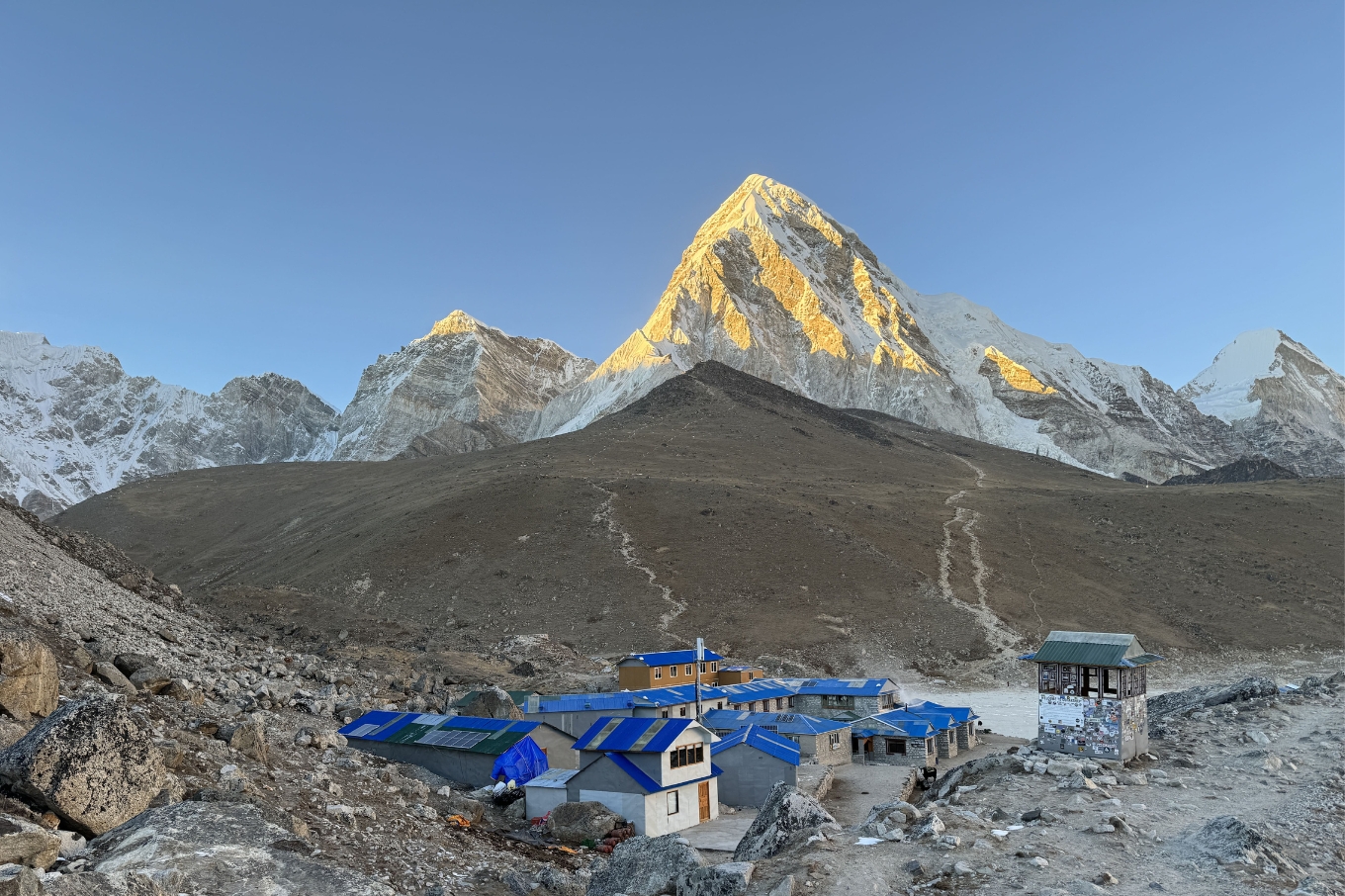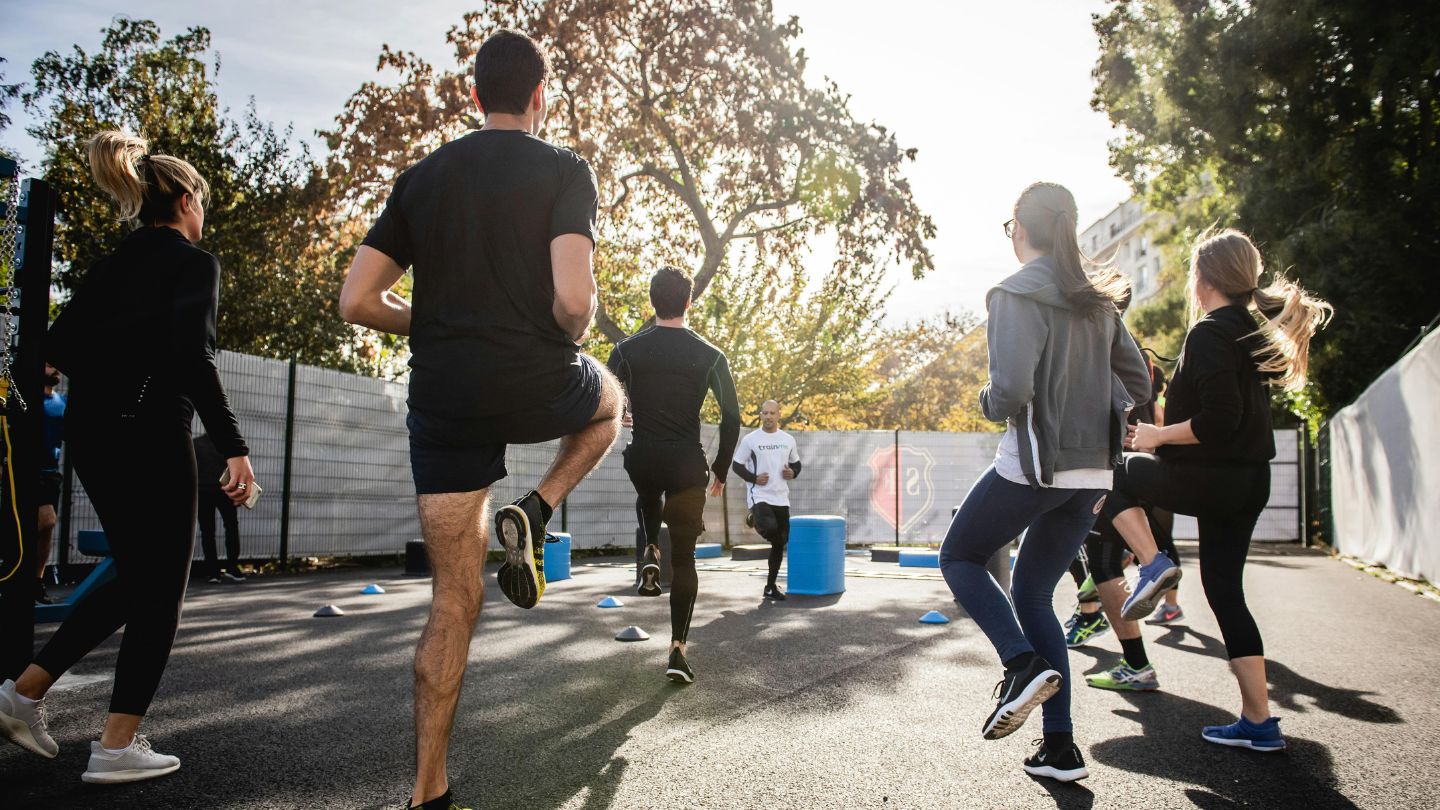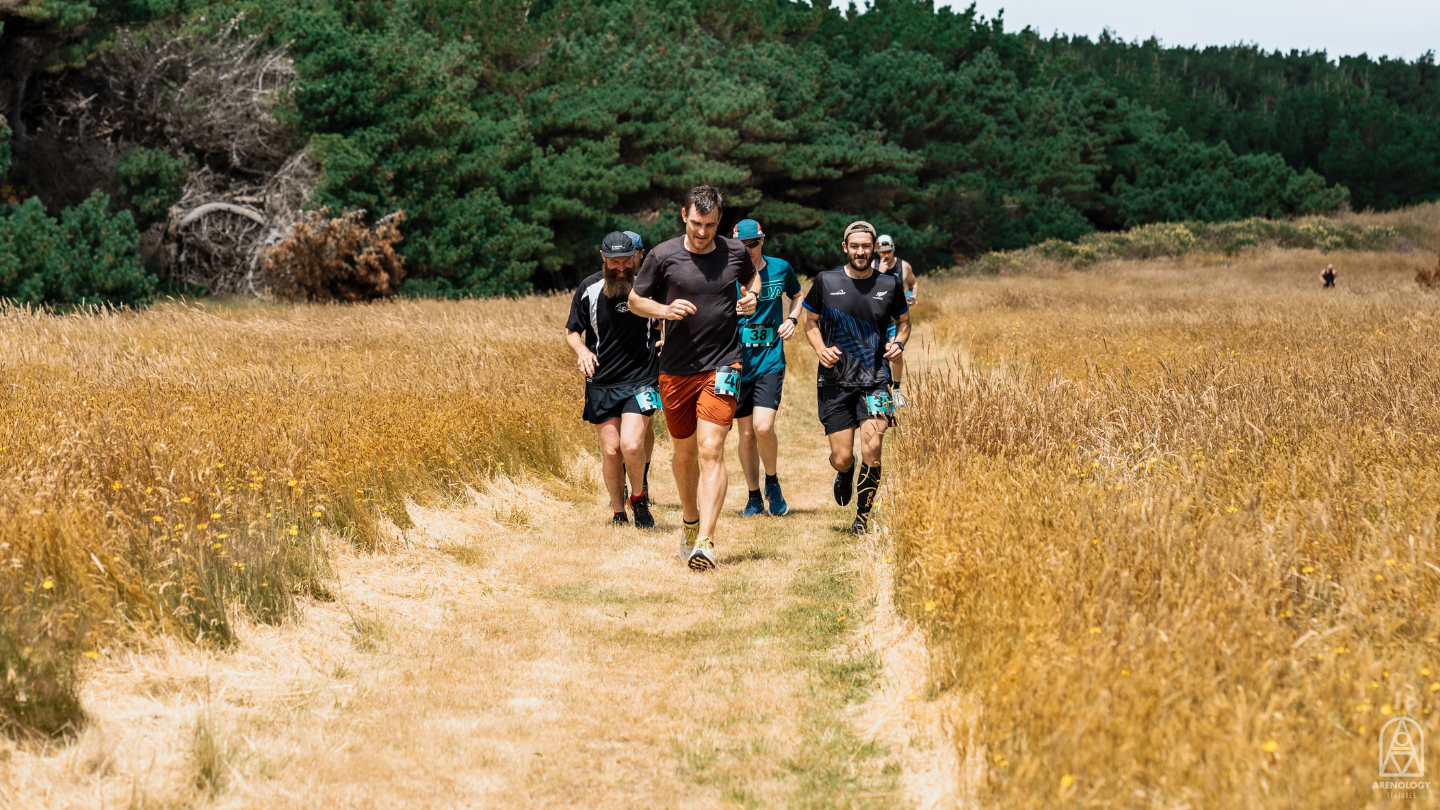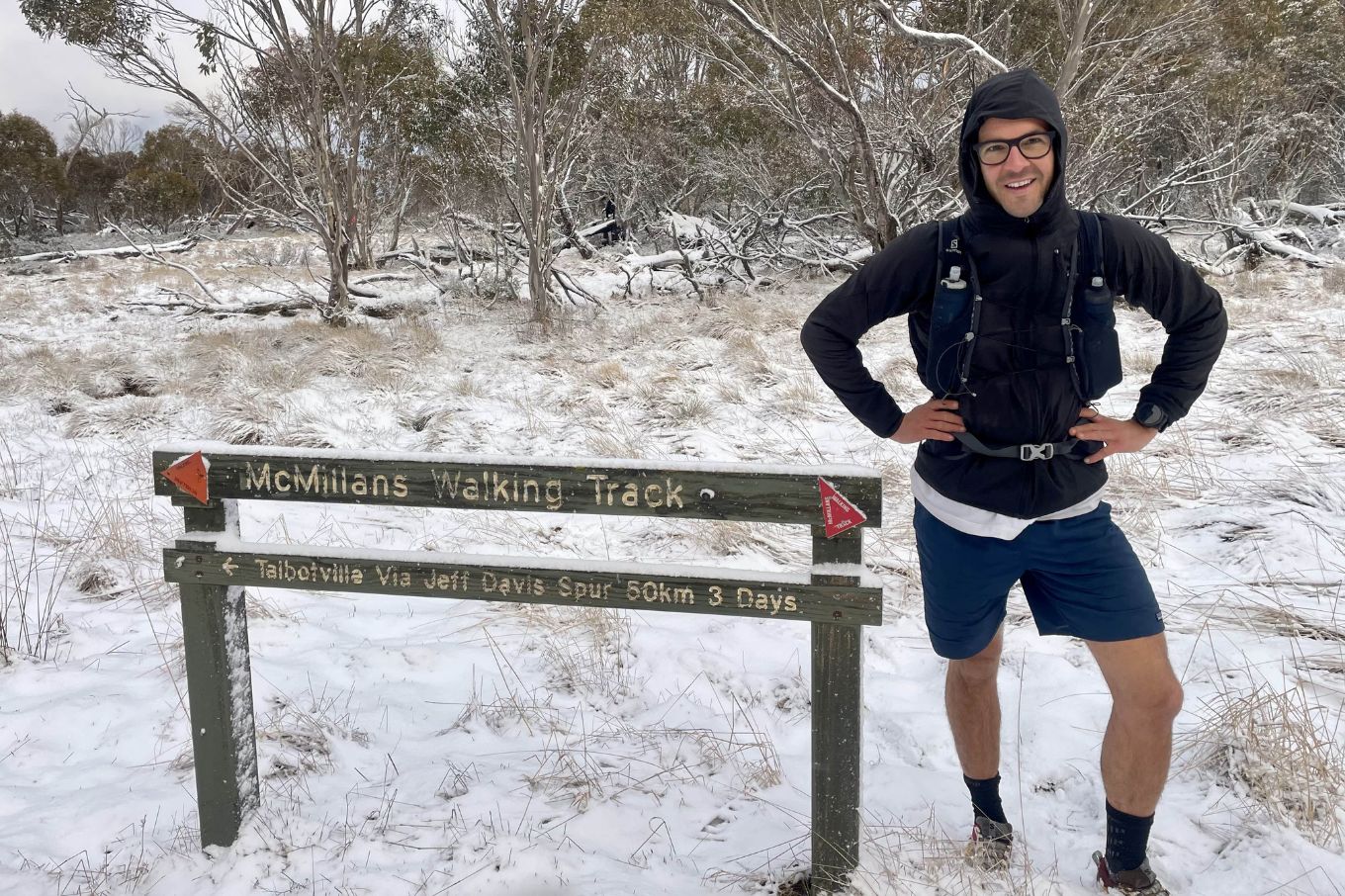Everest Base Camp FKT Challenge for the 'downhill' journey
Words: David Byrne
Photography By: Majell Backhausen
Everest Base Camp, and the great Mt Everest itself, is a classic bucket list item – and deservedly so. The scenery is stunning, you’re amongst one of the world’s greatest natural marvels, and as a pinnacle of trekking is considered physically demanding. The North Face athlete David Byrne recaps his adventure at Everest Base Camp in December 2024, where he and Majell Backhausen took to the snowy crests of a serene landscape that simply took their breath away.
The Everest Base Camp trek is one of the most iconic routes on the planet. There are few outdoor enthusiasts who wouldn’t love to see this remarkable part of the world.
I’ve been lucky enough to spend quite a bit of time in Nepal, and every visit brings with it new experiences and an even deeper love and respect for the people, culture and natural wonders the country is brimming with.
READ: Nepal Ends A Golden Age of Trekking | Wild Magazine
On this occasion I was there with a unique purpose, to help a friend become the first paraplegic to walk using braces to base camp. His story is truly inspiring and worthy of an entire issue of the magazine, so I won’t go into detail about it, as a couple paragraphs wouldn’t do it justice. But let’s just say that over 11 days he ground his way through the 54km journey from Lukla to Everest Base Camp, along the way going from 2,850m at the start and reaching the thin air of 5,364m at the famed rock of Everest Base Camp.

Joining me on the trip was a team of local guides and porters, whom without their kindness, hard work and humility we never would have made it. I’ve got the wonderful folks from Take On Nepal to thank for this.
Also along for the ride was Majell Backhausen. He’s been a good mate of mine for a number of years and we had long spoken about doing some epic missions together, beyond the trail races that normally see us meeting up.

Upon reaching the end of the inspiring hike to base camp, I’d arranged a helicopter to get my mate Jay back to the start, however Maj and I were faced with a couple of options. One was to head back to Lukla over a few days and enjoy the scenery. The other was to hustle back as quickly as possible so we could be there when Jay arrived. Naturally, after sharing such a special time over the days prior, we were keen to stay as a team until the end. That meant one thing – an FKT attempt for the ‘downhill’ journey.

The existing record had been set a few years prior, in a time of 10:51:57. We knew this as a few nights early we were amazed by a fireside story of an epic woman crushing the route in harrowing conditions. It might be net-downhill, but up high it’s freezing cold and often in snow at this time of the year, plus you still amass around 1,650m of uphill along the way too. Add into the mix mule and yak trains, lots of rutted out stairs and the thin air, and you’ve got a tough, but spectacular adventure.
What made our run-hike back to Lukla even more challenging was that the long days with Jay, carrying lots of gear, left both Maj and I fatigued. We were also faced with doing the majority of the FKT attempt in the dark, thanks to starting late in the day but at the time of making the call to do the mission, this never concerned us, because anyone attempting this route would likely have similar issues, thanks to having to trek all the way to the start.
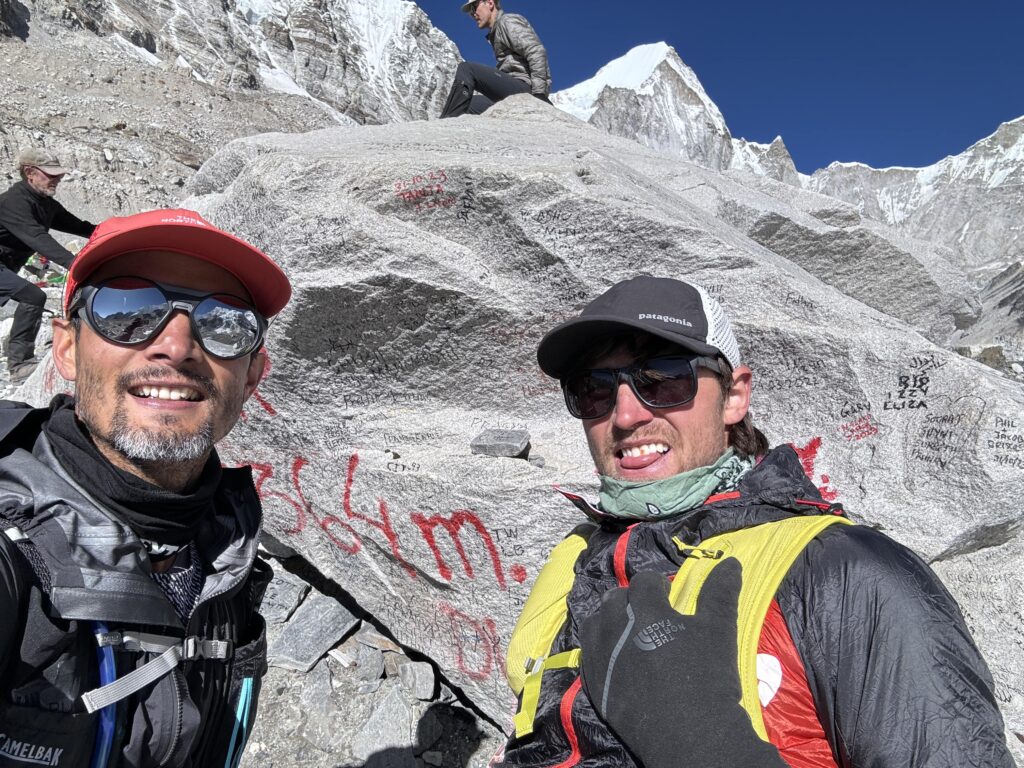
After a massive group hug and a tonne of photos with Jay and the team, we smashed a chapati and egg, a couple cups of masala tea and started our journey. It was 1pm and the temperature was a crisp -15 degrees. Tight lungs and numb hands and feet meant for slow going through the technical first few kilometers.
From there, near the hamlet of Gorakshep, the trail gets more runnable with one rocky and iced section through a glacial moraine. Thankfully we had warmed up enough to shed a layer of clothing, and moving through the valley the terrain was tame enough that we could enjoy the epic scenery, with the last of the golden light of day shining on the peaks.

Moments later the sun disappeared behind the hills. The subtle glow lingered for an hour, prolonging the inevitable need for headlamps. It was 21km into the journey at the village of Pangboche that we adorned our lights and filled our water bladders for the first time. The icy waters of the stream made the plummeting temperature seem relatively mild. It was now the pace started to drop. Clouds closed in making the visibility even poorer, with thick fog meaning the headlamps were almost a burden. We pressed on, exchanging only the occasional word as a light rain started to fall, turning the snow into slush.
The next point of interest was at the riverside hamlet of Phunki Thanga. It sits in a deep valley, with a steep and at times technical climb to Sanasa. The now muddy ground started to get slippery and rounding a corner near the top we stumbled across a herd of yaks. They were covering the narrow trail, huddled together like penguins. To one side was a steep drop-off and on the other was a cliff-like rockface. Our best option was the latter of the two, which entailed a sketchy traverse on crumbling rocks with sections of flowing water. Needless to say it was a relief when we popped out the other side to find a bewildered herder smoking beneath a tree.

The couple of hours that followed took us beyond the major centre of Namche Bazaar, down the steep, stair-riddled descent on the other side of town and onto relatively easy trail to both navigate and run on. When I say ‘run’ it was more of a shuffle with the occasional power hike up sets of stairs or steeper sections. Our spirits were high at this point, as we knew we had the worst of the trail behind us and only around 16 km to go. The rain was persisting, but being below 3,000m altitude the temperature was a balmy 2 degrees.
Time moved slowly, as we followed the narrow beams of light created by our headlamps. The wet conditions and late night meant for a sombre mood, made all the worse by a persistent cough I’d had since arriving in Nepal. If that wasn’t enough to start to add a touch of doubt to our FKT attempt, we had one final hiccup – a locked gate at the Sargamatha National Park entry. It’s an iconic checkpoint that on the return journey from Everest Base Camp puts you at 13km to go. Normally you pass through with a smile from the guards once they’ve seen your permits. But tonight, they were less joyous to have us tapping on their door at 9pm.

Let’s just say that we were greeted by a grumpy soldier with a machine gun. He left us in the rain, shivering and soaked, while they debated inside whether or not to let us pass. Maj had maintained his positive energy, managing a joke or two about us potentially having to turn back or try to hobble away from the armed guards. Thankfully, after the longest 15 minutes of my life, we were allowed to pass.
From there it’s a gradual descent all the way to Chhuthawa, from which you progressively climb the final 4.5km or so. The trail ends with a bit of a kick in the guts, with the last couple kilometres from Cheplung grinding its way uphill to the finish at the Tourist Checkpoint at the beginning of Lukla. On a busy day it’s alive with energy as countless trekkers stop for selfies prior to embarking on their Everest Base Camp hike.

In our case, it was with a sense of relief, more than joy, that we had reached the gates. We were cold, wet and hungry, but still super stoked to have completed the challenge in 9h 47m 59sec. No doubt there’s plenty of local guides and porters that probably could or have already done it faster, but we were proud of our achievement nonetheless.
The FKT started with the simple goal of being there for our friend when he arrived the following morning, but ended up being a memorable mission for many other reasons. We had bad weather and a couple minor headaches along the way, but throughout it, somehow we managed to laugh plenty too. Perhaps the best memory of all was getting to Lukla and finding that it was a ghost town and our accommodation was locked up for the night. But that’s a story for another time.

